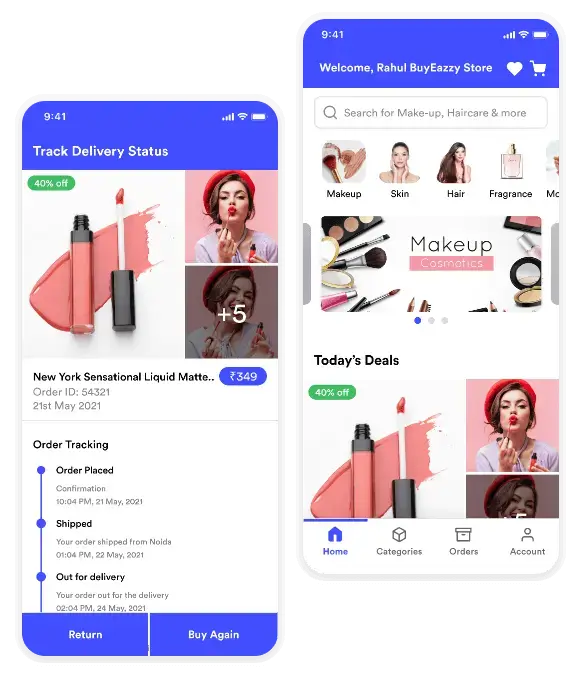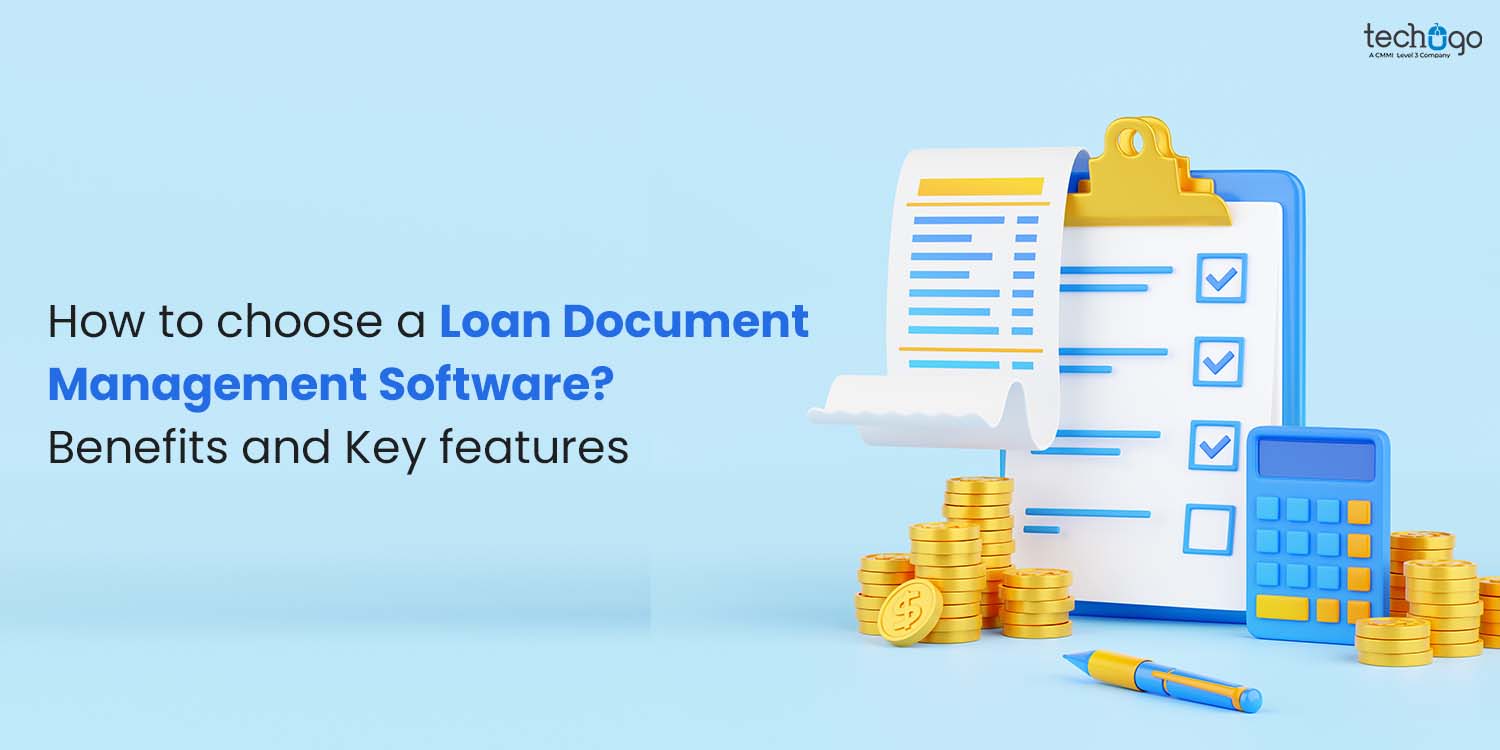Businesses, banks, commercial lenders, and mortgage firms must manage loans. Customers want to feel safe when taking out a loan, whether for personal or professional purposes. They have more options for lending, are tech-savvy, and use multiple devices. Some of these unique financial technology products are new to them.
It’s common for people to apply for loans or manage their mortgage payments while they wait in traffic or at the airport.
Loan document management software can make lending more accessible. Financial institutions, large and small, have access to loan document management software that allows them to create and manage digital products.
What is Loan Software?
Lenders use loan software to consolidate information, tasks, and financial services throughout the loan term. These capabilities often relate to loan origination, refinance, service, debt collection, customer management, and credit scoring.
Financial institutions use loan processing software to have better client data visibility and speed up processing. Your loan officers can automate workflows, calculations, and decision-making with cloud-based software to collect documents, determine pricing options, manage compliance, and engage with borrowers at every process stage.
Depending on the target audience and your business use case, it is possible to use one-stop shopping for digital loan servicing or to build a stack of different loan processing software.
Integrations are an essential part of the loan document management software ecosystem. As a result, you’ll want to search for platforms that communicate well with your core systems, relationship management tools, and any other financial products that could enhance the customer experience.
How loan systems improve the lending experience?
A seamless digital solution to loan management streamlines your business processes and creates excellent client experiences.
Digitalization in loan management helps you to eliminate manual work and paper. In addition, the toolkit can be used to transform how your institution works. For example, businesses can automate loan processing software and set up a machine-governed account opening process with Big Data and Analytics.
Combined with machine-learning capabilities, these technologies can leverage significant investments such as student loans and trading. In addition, these enhancements allow you to identify new growth opportunities, manage back-office data better, and structure existing loans using presentation software.
What are the benefits of the best free loan management software?
There are many benefits to using the best loan management software available. But first, let’s look at the top honors.
1. You save time
Many manual tasks can be automated with free loan servicing software. For example, automating tasks such as posting unpaid, partial, or late payments, tracking customers in default and charging fees, and recalculating payment schedules that have been altered will help your team save time.
Free loan management software is a tool that helps to simplify many aspects of your day and allows you to focus on the most critical tasks to keep your team productive.
A loan management software user can process a thousand times more files than someone who uses a manual procedure. When the data volume is high and sensitive, automation allows for establishing a critical organizational process in the accounting or treasury department. High-quality loan servicing software helps to manage time, data, and outcomes. In addition, it allows for great flexibility and speed.
2. Reduce Calculation Errors
First, the significant decrease in computing errors is undeniable. This program can manage mistakes that could prove costly to the company. Human error can cause many problems, no matter how competent your team is. Innovative loan management systems make the most of automation and tools and reduce the chance of making mistakes.
3. Maximize Revenue
When you can track outstanding loans, spot potential hazards, and respond quickly in extraordinary circumstances, your revenue naturally increases. This helps you and your staff work more efficiently.
Monitoring in management software allows you to get payments faster, increasing revenue. In addition, this software will simplify your follow-ups while enabling you to collect money!
A free online loan management tool lets you see your projected revenue for the short, medium, and long term. This system allows you to forecast your cash flow and plan the activities and tactics to maximize your gain.
How do you create an efficient document management system that works?
A plan of action must be followed by an organization when they want to set up a document management system.
Once you have done this, it is time to consider the benefits of document management within your organization and how it can improve performance.
These are the steps you should follow:
1. Identify your Documents
Begin by taking inventory of loan documentation software and categorizing them into various categories like department, stage, type, importance, or even importance.
2. Plan Document Management
When planning your document management software system, you should establish the rules for creating documents. For example, do you have an internal style? You can find the template section further below.
How do you review, share, or dispose of documents? It would help if you also determined the rules for retrieving or storing papers at work.
3. Specify Document Sharing Guidelines
Establishing document-sharing guidelines according to your company’s Plan or document management guide is essential. In addition, it is crucial to determine which documents can be shared within and outside the workplace.
These are some questions you might want to ask:
- Who can authorize document sharing?
- Are employees required to have the authorization to share documents?
- What loan documentation software can employees share with others?
- Who has access to the shared features of documents?
- Can employees share documents with the entire company or with a particular team?
- The Plan should be implemented.
- You will need to create this Plan based on the security requirements for documents, your business size, data types, and your budget.
New technologies and processes have allowed for more effective collaboration between employees from different departments. This has led to a decrease in the hierarchy within businesses.
Document management must address all aspects of task completion. This includes timely submission, approval by the appropriate personnel, prompt retrieval and retrieval by project participants and department heads, and regular updates on all projects.
4. Document Lifecycle
Document Lifecycle manages a document from its initial creation to its final disposal. It has various stages where the document is located with different authorities at work.
These are the stages:
- Document Creation: How do we create a document? What format should it be?
- Review: What approval process does it go through? Who reviews the document?
- Document Storage: Where do we keep the document after approval?
- Document sharing: Who can share the document with you? External sharing is allowed.
- Do you archive or delete a document after a few years? What length? What records should you keep? Who approved this process? Is it necessary to renew loan documentation software every few years?
4. Collaboration
Employees collaborate on emails and documents to achieve their goals and meet deadlines. Therefore, document management must be easy to access and secure for employees.
It is essential to install an electronic document distribution system so that staff can collaborate on documents even if they are located in different places. This allows for seamless communication between departments. Some teams might need additional collaboration tools to ensure efficient operations.
5. Co-Authoring
The feature of co-authoring allows multiple users to edit documents simultaneously. This feature is common in business collaboration. This will make it easier for employees to share information and collaborate faster.
You can see in real-time who is changing what with co-authoring. Keep up-to-date! This feature should be enabled.
6. Search Capabilities
It takes workers,on average,18 minutes to locate a document. This is a waste of time that can cost your company a lot. This is one reason your document management system must have reliable search capabilities.
These are some ways to improve your search capabilities in a document-management system.
- Tag with Metadata: The metadata tag makes it easier for you to locate the documents using the appropriate attributes.
- Verifying Titles
- Document ID: You can use Document ID to identify records in your organization based on their progress, departments, or other factors.
- Search Synonyms help find relevant documents, even if users have different keywords.
7. Templates
If we don’t include templates, what is a document management manual? Here we are.
A document template is a pre-created document that has some formatting. A pre-designed structure that you can use to insert the missing or varied bits.
You can, for example, choose from a Cover letter or invoice. It’s easy to fill in the gaps and ready for you.
Here are some reasons to use document templates at work.
- Keep it consistent: You can establish a template that will guide you in how your business letters and other documents should look. This will ensure consistency across all documents, not each individual’s unique style.
- Predetermined Formatting: A template is pre-set in line spacing and font size to ensure uniformity.
- It saves time: Users don’t have to start everything repeatedly when using document templates.
- Branding: Uniformity in business documents is a foundation for branding.
- Error reduction: Employees must create the invoice or report layout every time. This could lead to human error. Meanwhile, document templates minimize errors.
8. Security
Security of documents is essential in any business because it directly impacts the integrity and functioning of the company. So many records are created, approved, signed, and distributed to different departments by users. Before you can use them, all this is required. You don’t want them to fall into the wrong hands or to be seen by unwelcome eyes.
9. Digital Signatures
Are you familiar with your approval process? You will likely need digital signatures to complete this approval workflow. Digital signatures can be done with a variety of apps, including SignNow, Adobe Sign, or DocuSign.
Digital signatures can be easily added to document management software. Some software can integrate quickly, while others require more work. However, this will allow all parties to digitally sign their approvals instead of marking them in hardcopy documents.
The Most Common Loan Types Managed By Loantech Apps
It is intelligent to research the available loan servicing software for large and private lenders if you are considering building a digital lending system.
There are many types of loan management systems available for large organizations today.
1. Software for mortgage financing
Mortgage apps are designed for house buyers who apply for loans. Established banks usually provide free loan servicing software for mortgages, but NBFOs might also offer mortgage loans. In addition, mobile apps are available that simplify applying for a mortgage and refinancing it.
2. Software for retail loans
This loantech software helps customers get loans for any purchase, from cars and homes to consumer electronics. This category also includes loans against real property and credit cards. Retail lending can be described as a broad term that covers all types of loans.
3. Software for student loan servicing
Student loans are a large segment of personal loan tracking software. This software is ideal for cleantech apps, tracking, reporting, and calculation. In addition, it helps students manage their financial relationships with educational institutions.
4. Business loans
A business loan can fund cleantech investments in a start-up company or develop an existing business. Entrepreneurs and companies can apply for loans through banks, non-bank financial institutions, or online lenders. Private lenders have a section of loan servicing software that focuses on peer-to-peer lending.
Lenders can use cleantech software in three categories.
A loan calculator is an essential tool in loan management. However, estimating the amount of regular and down payments can be challenging. This is where loan accounting software comes in.
-
Online Loan Application Software
A separate software program can be used to generate loantech applications. To apply for a loan, you must collect and submit many documents and collateral materials. This is necessary for verification and credibility assessments. Online loan application allows individuals and businesses to complete and introduce loan app development. It also facilitates verification for financial institutions.
These loan application processing systems automate and simplify loan operations, such as calculating interest, fees, commissions, loan repayments, loan rescheduling, reimbursements, and loan rescheduling.
Many comprehensive loan management software combine the loantech app, calculation, and management capabilities.
Also Read – Why should businesses invest in Fintech Apps?
7 Key Features of Loan Management Software
After investing in a custom loan management software, ensure your tech provider includes these essential features.
- Origination of loans. When processing a loan request, the machine must be able to assess the risks and aid in making a decision.
- Service of loans. This is a crucial feature of loan management software that deals with complex loans. It classifies them by interest rates and payment deadlines.
- Collection of funds. To enable payments, the service should include a digital wallet module. This feature requires data privacy, so every online solution developer should invest in a secure PayPal getaway.
- Management of debt. You can manage your repayment schedule and fulfillment and calculate the fees by using the in-app notifications.
- Communication platform. Your employees will have access to accurate, current data that is updated in real-time.
- In-app analytics. The loan system should process the data algorithmically to establish connections between different data points.
- Module for reporting. Data visualization is essential to monitor the business’ performance and track cash flow.
What’s the purpose of the Best Free Loan Management Software?
These key points will help you narrow down the purpose of the best loan management system.
- Control the credit allocation of the lending company
- You can access loan servicing data such as payment history and escrow information, tax history, investor reports, and borrower payments. Also, keep track of loans that are based on different categories
- Multiple levels of interest are available.
- Supports credit bureau reporting, bankruptcy and foreclosure, REO, and charge-off.
- You can keep track of the due dates for payments with a month-end summary and cut-off, investor, and year-end reports.
- Late fees can be applied manually to accounts or automatically.
- Self-service support for borrower
Are You Ready to Invest in Loan Servicing Software?
Do you doubt the necessity of spending money and time to get online loan management software? It is time to make the leap and switch to automated solutions to manage your loan processing.
These are compelling reasons to choose the best loan servicing software available for your company:
- Reduced Errors: Professional loan management solutions reduce computational errors due to the human element and increase accuracy in all loan-related operations.
- Advanced Loan Management Solutions: Companies often choose advanced loan management solutions because they believe compliance is essential. These tools help ensure that all documentation is in order and complies with the regulations.
- Increased Data Security: Loan servicing software uses strict security measures to ensure client data safety. Several security measures can prevent hackers and data theft, including password protection, firewalls, end–to–end encryption, firewalls, authorized user control, and password protection.
- Superior Customer Experience: Companies need an automated open-source loan management system to improve processing speed and make faster decisions.
- Managers can identify delinquent accounts and take proactive steps to minimize risks. Loan servicing software is available. This helps to reduce risk and regulate cash flow.
How to Choose a Loan Management Software?
It cannot be easy to navigate among the many loan management software options. However, there are some guidelines that companies can follow when choosing the right software for loan management.
SMB businesses have different needs than established companies. Consider your business type and your current goals when choosing a loan management system or custom loan app development. Some companies may prioritize loan diversity, while others will base their decision on loan types and use cases. Others may offer flexible customization options and loan repayment options.
You will also need to balance your company’s strategy with your customers’ needs. Therefore, it is essential to consider the needs of all users and stakeholders within your company. This will provide reliable information when choosing the software for loan management.
-
Accessibility and Availability
Understanding your customers’ needs will help you choose the best way to deploy and deliver your loan tech software. Because it allows companies to use cloud infrastructure resources to power their application backend, SaaS is the best choice. However, it would help if you also considered making your loan tech app available on many mobile devices and operating systems.
Conclusion!
Sometimes it is worth starting work on your portal from scratch if the technical requirements are too complex, the business model needs to be simplified, or if you have the budget to cover all costs.
In most cases, however, a white-label P2P lending platform software will allow you to create a private marketplace or portal with all the necessary flows.Therefore, it is essential to choose the right lending software.
P2P lending software is offered by some mobile app development companies, while others offer solutions for traditional financial institutions like banks and lending bureaus. Some also specialize in white-label crowd-investing solutions.
However, a loan application processing system can meet these requirements and help companies achieve their goals.
Post Views: 2,829




 SA
SA
 KW
KW
 IE
IE AU
AU UAE
UAE UK
UK USA
USA
 CA
CA DE
DE
 QA
QA ZA
ZA
 BH
BH NL
NL
 MU
MU FR
FR

























